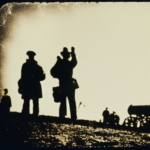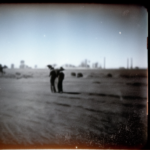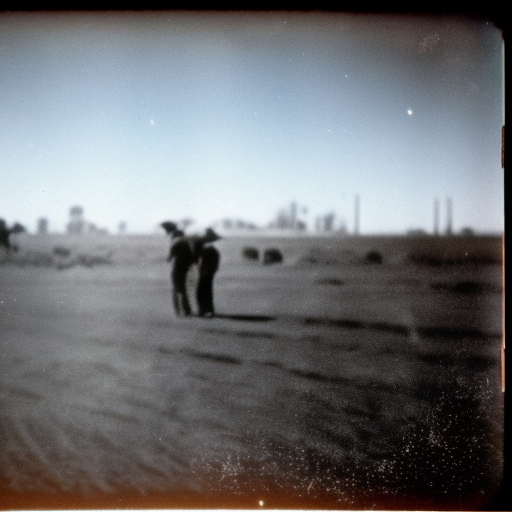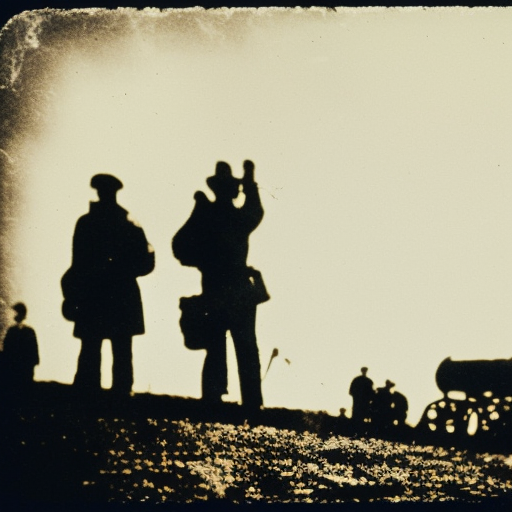The Dust Bowl (1930s)
The Dust Bowl was a period of severe dust storms that ravaged the American Midwest during the 1930s. It was caused by a combination of natural factors and poor farming practices, leading to widespread ecological and economic devastation.
Causes of the Dust Bowl
The primary cause of the Dust Bowl was a prolonged drought that affected the Great Plains region, including parts of Texas, Oklahoma, Kansas, Colorado, and New Mexico. This drought, combined with high temperatures and strong winds, created the perfect conditions for the formation of dust storms.
However, human activities also played a significant role in exacerbating the disaster. Farmers had been encouraged to settle in the Great Plains during the early 20th century, enticed by promises of fertile land and abundant rainfall. They engaged in extensive plowing and cultivation of the land, which destroyed the natural grasses that held the soil together. Additionally, the use of mechanized farming equipment, such as tractors, allowed for deeper plowing, further destabilizing the topsoil.
The Impact of the Dust Bowl
The dust storms had a devastating impact on both the environment and the people living in the affected areas. The storms stripped away the topsoil, leaving behind barren and eroded land. This led to a decline in agricultural productivity, as crops failed to grow in the depleted soil. Farmers faced immense financial hardships, as their livelihoods were destroyed.
The dust storms also had severe health consequences. The fine dust particles, known as “black blizzards,” caused respiratory problems and eye irritation. Many people developed a condition known as “dust pneumonia,” which led to numerous deaths, particularly among children and the elderly.
Government Response
In response to the crisis, the federal government implemented several measures to alleviate the effects of the Dust Bowl. The Soil Conservation Service (SCS) was established to promote soil conservation practices and provide technical assistance to farmers. The SCS encouraged the use of contour plowing, strip cropping, and the planting of windbreaks to prevent soil erosion.
The government also initiated large-scale tree-planting programs, such as the Shelterbelt Project, which aimed to create windbreaks by planting trees across the Great Plains. The Civilian Conservation Corps (CCC) employed thousands of young men to carry out these tree-planting efforts.
Migration and Resettlement
The Dust Bowl triggered a massive migration of people from the affected areas. Many farmers and their families, known as “Okies” and “Arkies,” left their homes in search of better opportunities elsewhere. They traveled westward, particularly to California, in hopes of finding work and escaping the harsh conditions of the Dust Bowl.
However, the migrants faced numerous challenges and discrimination in their new destinations. They often encountered hostility from locals and struggled to find employment. Many ended up living in makeshift camps or shantytowns, enduring poverty and hardship.
Long-Term Effects
The Dust Bowl had long-lasting effects on both the environment and agricultural practices. The ecological damage caused by the dust storms took decades to recover. The federal government’s efforts to promote soil conservation and sustainable farming practices helped prevent future dust storms and improve the overall health of the land.
The Dust Bowl also brought about significant changes in agricultural practices. Farmers adopted new techniques, such as crop rotation and the use of cover crops, to prevent soil erosion and maintain soil fertility. These practices continue to be essential in modern agriculture.
In conclusion, the Dust Bowl of the 1930s was a catastrophic event caused by a combination of natural factors and human activities. It resulted in severe ecological and economic damage, forcing many people to migrate in search of better opportunities. The government’s response, including soil conservation measures and tree-planting programs, helped mitigate the effects of the disaster and led to long-term changes in agricultural practices.












